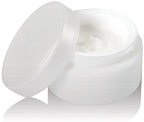Winter Skin
By Rita Woods
The skin is the body's first barrier of defense against millions of bacteria, viruses, mold and fungi. Think of your skin as the walls of a fortress that protect the interior from invading armies. In short, our skin is vital to our overall health. That being the case, why do we treat it so poorly? Especially during these winter months, it's important to take care of your skin so it can help take care of you. Here's what you can do.
What can I do about it? As a licensed massage therapist, this is the question most often asked by my clients in the winter months. They are talking about their dry and sometimes cracked skin. The skin is the first barrier of defense against millions of bacteria, viruses, molds and fungi. The skin is like the walls of a fortress that protect the interior from invading armies. Intact, healthy skin is vital to our overall health. I always keep extra lotion on hand during the winter because my clients' skin will suck it up like a sponge.
 Let's first look at why the skin becomes dryer in the winter months. Low humidity is the main cause. The air around us is more dry, so the moisture is wicked out of our body and we receive virtually no moisture from our environment. Other factors contribute to dry skin, but dry air will exacerbate an existing problem.
Let's first look at why the skin becomes dryer in the winter months. Low humidity is the main cause. The air around us is more dry, so the moisture is wicked out of our body and we receive virtually no moisture from our environment. Other factors contribute to dry skin, but dry air will exacerbate an existing problem.
When dealing with dry skin, you should have two objectives in mind: first, getting moisture into the cells, and second, keeping it there. One thing you can do is to work with the air around you. Add some moisture to it. When I was a kid, I remember my mom putting containers of water on the vents in the floor. She was adding moisture back into the air. That was our humidifier. Grandma always had a cast-iron tea kettle simmering on her wood stove. Again, a way to put moisture back into the air. And in addition to keeping our skin moist and cutting down on static electricity, moist air retains heat better.
If you are dehydrated, drinking more water can also help, and not getting enough water will certainly contribute to dry skin. However, recent studies have shown that people who are already adequately hydrated do not receive any additional skin benefit from drinking more water.
Now let's look at topical applications. These are moisturizers, with hand and body lotions being the most commonly used products. There are three types of basic moisturizers. One puts moisture in, one prevents moisture from escaping and one makes the skin feel smoother. Individual skin varies, so trial and error may be necessary to find the right combination. It's chemistry that makes these work, so I'll give you ingredients to look for. There are many substances in each category, but these most often appear in over-the-counter lotions:
 Humectants. This is a classification of moisturizer that penetrates the stratum corneum, the top layer of skin, and helps the skin absorb moisture. Humectants are popular in anti-aging products, since skin dries out more as we age. Common substances in this category include glycerin, hyaluronic acid, panthenol, propylene glycol and sorbital.
Humectants. This is a classification of moisturizer that penetrates the stratum corneum, the top layer of skin, and helps the skin absorb moisture. Humectants are popular in anti-aging products, since skin dries out more as we age. Common substances in this category include glycerin, hyaluronic acid, panthenol, propylene glycol and sorbital.
Occlusives. This category of moisturizer works by coating the top layer of the skin to decrease evaporation. Common substances with occlusive properties include lanolin, stearic acid, cetyl alcohol, caprylic/capric triglyceride, mineral oil and petrolatum. I can already hear the moans about using mineral oil or petrolatum. Keep in mind that for many people with dry skin, their hands, fingers and feet will actually crack and bleed. This is a most unhealthy condition and can be quite painful as well. In this case, they may want to use grandma's beauty secret of smearing a white petroleum product, like Vaseline, on their hands and then donning a pair of white gloves before going to bed.
Emollients. Emollients soften and smooth skin texture. Common substances that possess emollient properties include cyclomethicone, dimethicone, isopropyl myristate, octyl extenuate, isopropyl palmitate, isopropyl isostearate and jojoba oil.
Exfoliators. A lotion or moisturizer works more effectively when the skin is free from dead surface cells. To achieve the best results in the winter, use a good nonabrasive exfoliate that contains its own moisturizing properties. A salt scrub may help, but can also be drying to winter skin.
 By knowing the action of different ingredients, you can make better decisions about winter skin care. But there is still more that can be done. The skin has a layer of lipids that is vital to healthy skin. This natural lipid component can be stripped away with soaps, harsh cleansers and even hot water. At the very least, try using warm rather than hot water for showering. After showering, pat dry and while the skin is moist, but not wet, apply your lotion; especially a moisturizer or lotion with humectant properties. This can actually draw the moisture from the surface into the skin.
By knowing the action of different ingredients, you can make better decisions about winter skin care. But there is still more that can be done. The skin has a layer of lipids that is vital to healthy skin. This natural lipid component can be stripped away with soaps, harsh cleansers and even hot water. At the very least, try using warm rather than hot water for showering. After showering, pat dry and while the skin is moist, but not wet, apply your lotion; especially a moisturizer or lotion with humectant properties. This can actually draw the moisture from the surface into the skin.
The skin is the largest organ of the body and deserves quality care. For many people, winter care may require measures that go beyond their normal routine. Skin care problems should be viewed as any other acute or chronic health issue and be addressed accordingly. The use of products or ingredients that you may normally avoid could be your best defense. I had a friend tell me that when her hands start to crack, she uses grandma's Vaseline-and-gloves regime. It's not something anyone should do all the time, but you'll be grateful when there is a problem.
Rita Woods is the owner of a natural skin-care company and a trainer and workshop facilitator on issues of spiritual growth and wellness.

